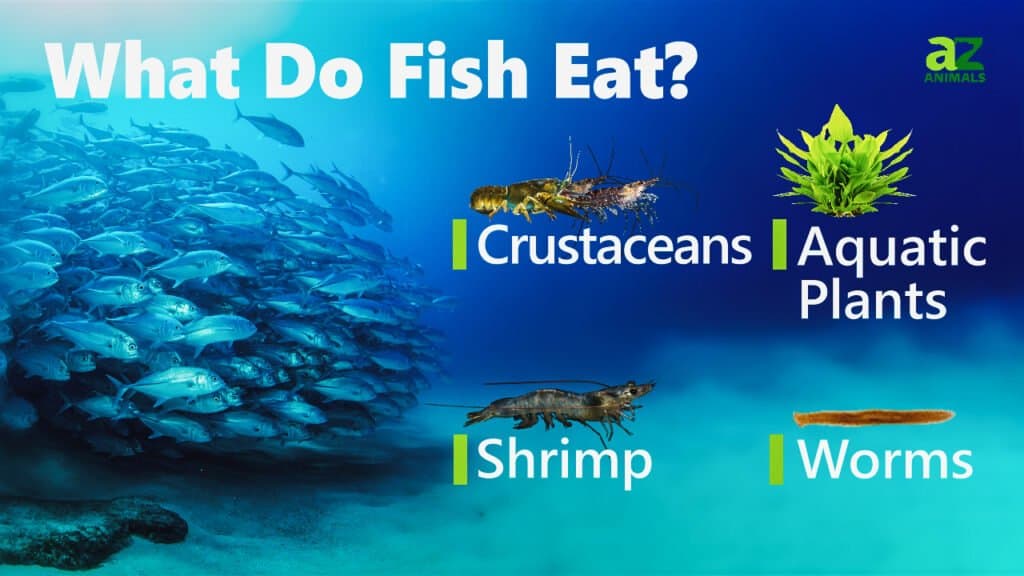Many different animals eat small fish, including larger fish, birds, reptiles, and mammals. Some examples include:
– Larger fish such as bass, pike, and barracuda prey on smaller fish.
– Birds like herons, kingfishers, and ospreys catch and eat small fish.
– Reptiles such as crocodiles, alligators, and snakes may consume small fish.
– Mammals like dolphins, seals, and otters also feed on small fish.
These are just a few examples, and there are many more animals in various ecosystems that depend on small fish as part of their diet.
Know More About: what eats small fish
Small fish play a vital role in the delicate balance of aquatic ecosystems, serving as prey for a vast array of predators. These diminutive creatures face a constant struggle for survival as they navigate their environments, always on high alert for potential threats. From mighty marine predators to stealthy freshwater hunters, the list of creatures that dine on small fish is extensive and fascinating. In this article, we will explore some of the top predators that ensure the natural order in our oceans, rivers, and lakes.
Sharks, often referred to as the apex predators of the ocean, are renowned for their strength and remarkable hunting abilities. Their sharp teeth and powerful jaws make them formidable predators, equipped to feast on small fish with ease. Species like the great white shark and the bull shark have a particular penchant for dining on smaller fish, such as sardines, herring, and anchovies. Their streamlined bodies and lightning-fast speed allow them to quickly close in on their unsuspecting prey, often capturing them in a single swift motion.
On the opposite end of the size spectrum, we have large marine mammals that rely on small fish as a vital food source. Dolphins, for instance, are highly intelligent creatures that are not only agile swimmers but also skilled hunters. They use their echolocation abilities to locate schools of small fish, surrounding them with strategic precision. The dolphins then take turns charging through the school, gorging themselves on the helpless prey. Similarly, seals and sea lions also consume substantial quantities of small fish to sustain their energy needs.
Moving inland, freshwater ecosystems also have their fair share of fish predators. One of the most notable examples is the pike, a fearsome ambush predator. The pike lurks in the depths of lakes, rivers, and ponds, concealing itself among vegetation or rock formations to await an opportune moment to strike. With its sharp teeth and powerful jaws, the pike launches itself at unsuspecting smaller fish, securing a meal that will keep it satisfied until its next hunt.
Birds, too, have their place in the food chain, specializing in capturing small fish from the water’s surface. The osprey, a majestic bird of prey found on every continent except Antarctica, uses its keen eyesight to spot fish swimming just beneath the surface. With unmatched precision, the osprey dives from the sky, clutching its prey in its sharp talons before taking flight once again.
Lastly, one cannot ignore the human impact on the consumption of small fish. Commercial fishing, particularly for species like anchovies, sardines, and herring, poses a significant threat to their populations. These small fish often form the basis of the marine food web, so their depletion can have far-reaching consequences for entire ecosystems. Sustainable fishing practices, such as implementing quotas and avoiding overfishing, are crucial to ensuring the continued existence of small fish and maintaining the balance of the underwater world.
In conclusion, small fish face a myriad of predators in their struggle for survival. From sharks and dolphins in the depths of the ocean to pike lurking in freshwater hideaways, these predators are essential for the healthy functioning of aquatic ecosystems. Understanding the delicate relationship between predator and prey is crucial in preserving the intricate web of life that exists beneath the surface of our planet’s waters.
FAQs on what eats small fish
1. Q: What are some common predators of small fish?
A: Predators of small fish include larger fish species like pike, bass, and catfish, as well as various birds, such as herons, kingfishers, and cormorants.
2. Q: Do mammals prey on small fish?
A: Yes, several mammals like seals, dolphins, and otters are known to consume small fish, especially those found in coastal areas like herring and anchovies.
3. Q: Are there any insects that eat small fish?
A: While not common, certain insect species like giant water bugs can prey on small fish, usually when they are in their larval stage.
4. Q: Do reptiles feed on small fish?
A: Yes, reptiles such as turtles, alligators, and various species of snakes, like the water moccasin, often hunt small fish as a part of their diet.
5. Q: Are there any amphibians that eat small fish?
A: Yes, amphibians like frogs, especially larger species such as bullfrogs, are known to consume small fish if they are present in their environment.
6. Q: Do crustaceans prey on small fish?
A: While they mostly feed on plant matter or other invertebrates, some larger crustaceans like mantis shrimp have been observed to catch and eat small fish.
7. Q: Are there any birds that specialize in hunting small fish?
A: Yes, certain birds like the osprey or fish eagle, pelicans, and terns have evolved to become highly skilled fish hunters and rely on small fish for sustenance.
8. Q: Do small fish face threats from other small fish?
A: Yes, cannibalism is not uncommon among fish species, where larger individuals of the same species may prey on smaller fish of their own kind.
9. Q: Are there any specialized fish that solely feed on small fish?
A: Yes, species like the anglerfish, needlefish, and pufferfish are known to specialize in hunting and consuming smaller fish as their primary food source.
10. Q: Do humans impact the population of small fish predators?
A: Humans can influence the population of predators indirectly through activities such as overfishing, habitat destruction, or pollution, which can disrupt the natural balance and affect the abundance of predators that eat small fish.

